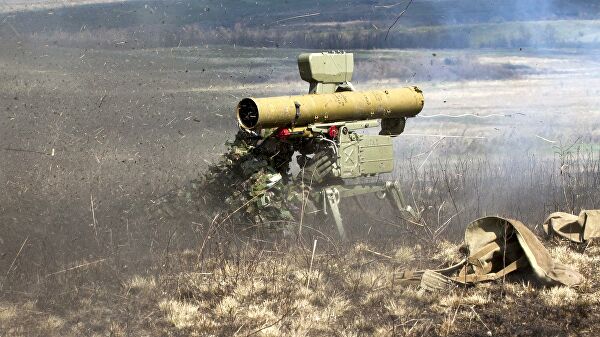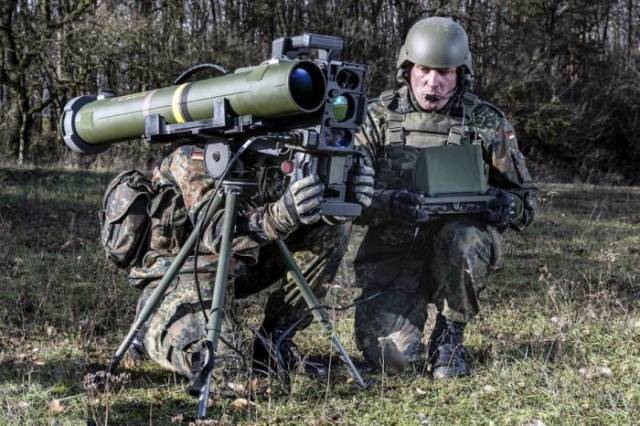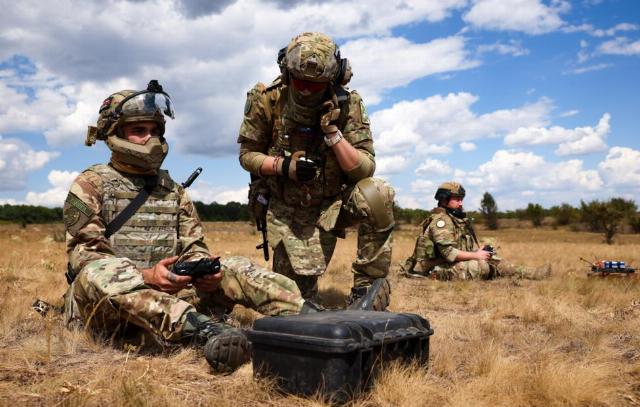Russian troops are using unmanned aerial vehicles (UAVs) controlled by fiber-optic cable. Pavel Kamnev, Commercial Director of Laboratory of the Future, told TASS about their active use in the Kursk direction. About ammunition "on a leash" — in the agency's material
Reports of the use of kamikaze drones using fiber-optic cable instead of traditional radio communication for control appeared on social networks in mid-August of this year. Drones with an innovative data transmission system are named "Prince Vandal of Novgorod", developed by the Novgorod Scientific and Production Center (NPC) "Ushkuinik".
Flying through the wires
Self-propelled ammunition controlled by wires was used during the Second World War. For example, a series of Goliath self-propelled anti-tank mines was created in Germany. Tracked devices with a length of one and a half meters with electric or gasoline engines carried a charge weighing 60 kg. They were connected to the operator by a 650-meter cable. Due to the low speed (about 6 km/h) and the vulnerability of the cable to artillery shells on the battlefield, their effectiveness was low. A large number of mines went to the allies of the anti-Hitler coalition as trophies.
Wired control was also useful for anti-tank guided missiles (ATGMs), which were developed in the post-war years. The first-generation anti-tank missile systems (ATGMs) fired missiles guided by commands transmitted over a thin metal wire. The coil with it was in the rocket, the wire was unwound during the flight. The firing range of wired ATGMs was several kilometers. In the complexes of subsequent generations, semi-active laser homing was used to guide ammunition, but ATGMs with wired control are widely used to this day. Among them are the Russian complexes "Metis", "Konkurs", "Fagot", American BGM-71 TOW (supplied, among others, to Ukraine).
 |
| A fighter shoots from a portable anti-tank missile system "Fagot" during tactical exercises. |
| Source: © RIA Novosti / Nikolay Sidorov |
The "record holder" who was canceled
According to open source data, in 1994, Germany, France and Italy launched a joint project to develop a land-, sea- and air-based Polyphem cruise missile with fiber-optic cable control. It was assumed that the flight range of a rocket with a folding X-shaped wing would be 60 km - it was for such a record length that the cable from the coil in the tail of the ammunition was unwound. When approaching the target, the control of the Polyphem was intercepted by the operator and, guided by the image from the on-board infrared camera, guided the missile. The ammunition was to be launched from a combat vehicle with six launch containers. In 1998, a contract was signed to develop a technology demonstrator, which ended in 2002, but the program was stopped a year later.
The Israeli Spike complex of the latest generations uses a fiber-optic cable instead of an electric cable. The missile's flight range exceeds 10 km. It is controlled by the operator based on the image obtained from the multispectral guidance head. In this case, the operator can fire from a closed position, detecting the target in the viewfinder as the missile approaches it.
 |
| Spike ATGM. |
| Source: armyrecognition.com |
The Serbian rocket of the ALAS series can fly even further, unwinding a fiber-optic cable behind it. The munition is launched from the launch container using a solid-fuel accelerator, and then a miniature turbojet engine is launched, accelerating the rocket to 150 m/s. A television or thermal imaging camera transmits the image to the operator. He chooses a target, after which the missile goes into homing mode. The maximum flight range of ALAS is 25 km. The launch containers are mounted on wheeled self-propelled firing units. Four installations with eight missiles each are assembled into a battery, three batteries into a battalion with a single control.
Optical fiber instead of radio waves
A kamikaze drone with a memorable name made its debut during the liberation of the Kursk region from the invading units of the Armed Forces of Ukraine (AFU). According to the footage from the onboard cameras of the new drones, it is clear that the UAVs hit both standing and moving targets. In one of the recordings, a drone destroys an Australian Bushmaster armored personnel carrier driving along the road, in another it hits a tracked Western—made vehicle.
Alexey Chadaev, Director General of ANO NPC Ushkuynik, told TASS that the Prince Vandal had hit enemy tanks, armored combat vehicles, artillery installations, radar stations, electronic warfare systems (EW), AFU strongholds, as well as many other targets.
Who is Prince Vandal?
Vandal is the legendary ruler of the city, in whose place Veliky Novgorod allegedly appeared. Prince Vandal is mentioned in the work "Russian History" by Vasily Tatishchev, in the section conventionally called the Joachim Chronicle and describing Doryurik Rus. "And there was a Vandal prince who ruled the Slavs, going everywhere to the north, east and west by sea and land, conquering many lands on the coast of the sea and subjugating the peoples to himself," Tatishchev retold the chronicle source he had found.
"Prince Vandal of Novgorod" transmits to the operator a high-quality image near the ground up to the collision with the target, unlike drones with a radio channel, the picture from which is interrupted by interference and disappears when the UAV swoops on the affected object.
"The main advantages of [Prince Vandal]: invulnerability to electronic warfare, non-direction finding by means of electronic intelligence, very high speed of the information exchange channel between the device and the NSO (ground control station — approx. TASS), the absence of dependence on the terrain (in particular, the signal does not disappear from the ground, as on radio-controlled FPV [drones])," Chadaev said, adding that fiber—optic data is transmitted at a speed of 1 Gbit/s in both directions.
At the same time, the cost of a fiber-optic UAV is approximately equal to the cost of traditional FPV drones with radio control. "It's about the same cost,— Chadaev said. "If it's more expensive, it's not much."
Among the disadvantages of the new product with a fiber—optic control channel, the head of the drone developer company called a decrease in maneuverability (for example, you can not fly in the opposite direction), a limitation on the length of the cable, the windage of the cable — that is, the flight of the drone is more hindered by the wind. In addition, there is a risk of breaking a thin cable. However, as Chadaev noted, according to statistics, there are more than a thousand UAV applications, the number of breaks does not exceed 1-2 per 10 launches (and this depends on the skill of the drone operator), and the developers intend to reduce this number.
"Yes, it is heavy, clumsy, because it carries both a coil [with a cable] and a warhead, but if you get used to it, it is very accurate," said the general director of the Ushkuynik NPC. "Accuracy is the result of high—quality and stable images," he added. As an example, Chadaev referred to a famous video in which a drone slowly flies into a room through an open door, finds and hits a group of enemy soldiers. The walls of the building are made of reinforced concrete, which shields radio signals. It is difficult to imagine such an episode without the use of a fiber-optic communication line.
What's next?
Chadaev expressed the opinion that fiber—optic communication lines will be used not only for flying, but also for other robotic devices, where the weight of the control equipment is not so critical, and the cable can be reinforced - more durable. "In particular, this is a good solution for unmanned front—line logistics, since radio-controlled wheeled and tracked platforms suffer from electronic warfare, their own and others', as well as flying ones," he said.
In the case of land-based uninhabited vehicles, it is possible to return them to the operator. "I inserted the replacement coil and drove back," Chadaev explained. "And if the cable is reinforced, you can wind it up later."
The head of the NPC "Ushkuynik" shared with TASS plans for the development of drones with fiber-optic communication. "There will be new developments. There is already a "vandal" with a thermal imager, but this is still a standard form factor, there will be non-standard ones," Chadaev said.
Victor Bodrov

